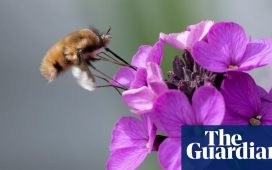Is being cooped up indoors during lockdown making you feel like you need to get in touch with your wild side?
Brushes with nature are good for the soul – and there’s no need to break Covid-19 restrictions to find them in your local area.
Discover playful otters, majestic red deer and even lovable bottlenose dolphins right on your doorstep.
Thetford, Norfolk: Otters
Though populations crashed in the 1950s due to persecution and pesticide poisoning, otters have rebounded to recolonise our waterways.
Nowadays, places as diverse as Birmingham, Bristol, Newcastle, Rugby, Winchester and Cardiff play host to urban otters but the animals’ nocturnal habits make them difficult to spot.
Bucking this trend is Thetford in Norfolk, where these aquatic members of the weasel family often show up in daylight. Look patiently from bridges crossing the Little Ouse River.
Inverness, Scotland: Bottlenose dolphins
Dolphins might not be the first thing that springs to mind when you think ‘urban wildlife’ but residents of certain Scottish cities are in luck.
Bottlenose dolphins are common in Scotland and can even be spotted in the Firth of Forth near Edinburgh.
They are more reliably seen in Dundee (your best bet here is Broughty Ferry Beach) but the top spot for urban dolphins is Inverness.
Head to Merkinch Local Nature Reserve (a half-hour walk from the city centre) to spy them moving up the Moray Firth on a rising tide.
Thames Valley: Red Kites
If you live in Oxford, Reading or Henley-on-Thames, cast your eyes skyward because there’s every chance you’ll see red kites overhead.
These impressive birds of prey were common in Shakespearean England but (beyond a remnant population in Wales) were extinct by the late 19th century.
Reintroduced in 1989, the birds are again familiar sights in towns throughout the Thames Valley.
Watch out for them soaring over the rooftops with their large tails, which twist to catch the slightest breeze.
Central London: Ring-necked parakeets
One of the most important lessons we’ve learned from this year’s lockdowns is that greenery and wildlife are a tonic.
Nature and animal encounters lift one’s spirits, and luckily they’re easy to find without stepping far from home.
London’s parks host myriad birdlife including woodpeckers and owls but far simpler to spot are the noisy, neon-green parakeets.
OK, so they’re an invasive species, but their gaudy colours will brighten the dreariest of lockdown days. Look for them in St James’s and Hyde Parks.
West London: Red Deer
Social distancing comes in handy when meeting stately stags. At this time of year, they’ve come down from their mating season testosterone high, so it’s the ideal opportunity to observe them in the Royal Parks of Bushy and Richmond (both hunting grounds of Tudor kings) and Windsor Great Park.
Being accustomed to people, they allow much nearer approach than their countryside cousins, so it’s possible to see them at unforgettably close quarters.
That said, male red deer boast impressively pointed sets of antlers so although they’re generally docile, be sure to respect their personal space.
Brighton: Starlings
Formation flying doesn’t get more impressive than the aerial stunts of starlings.
Prior to roosting each evening, the birds re-group from having dispersed all day to feed in the countryside, gathering together in groups that coalesce into a single, shape-shifting flock.
Moving as one through the darkening sky, these ‘murmurations’ are magical to watch. Though urban roosts exist from Gretna Green to Belfast’s Albert Bridge, the one on Brighton seafront is outstanding.
Arrive before dusk to see thousands of starlings swooping and wheeling over the sea before settling down to spend the night on the West Pier’s rusted frame.
Do you have a story to share?
Get in touch by emailing MetroLifestyleTeam@Metro.co.uk.
MORE : Dog found 300 miles away reunited with family after eight years
MORE : ‘Lonely’ animals at London Zoo ‘miss seeing visitors during lockdown’














